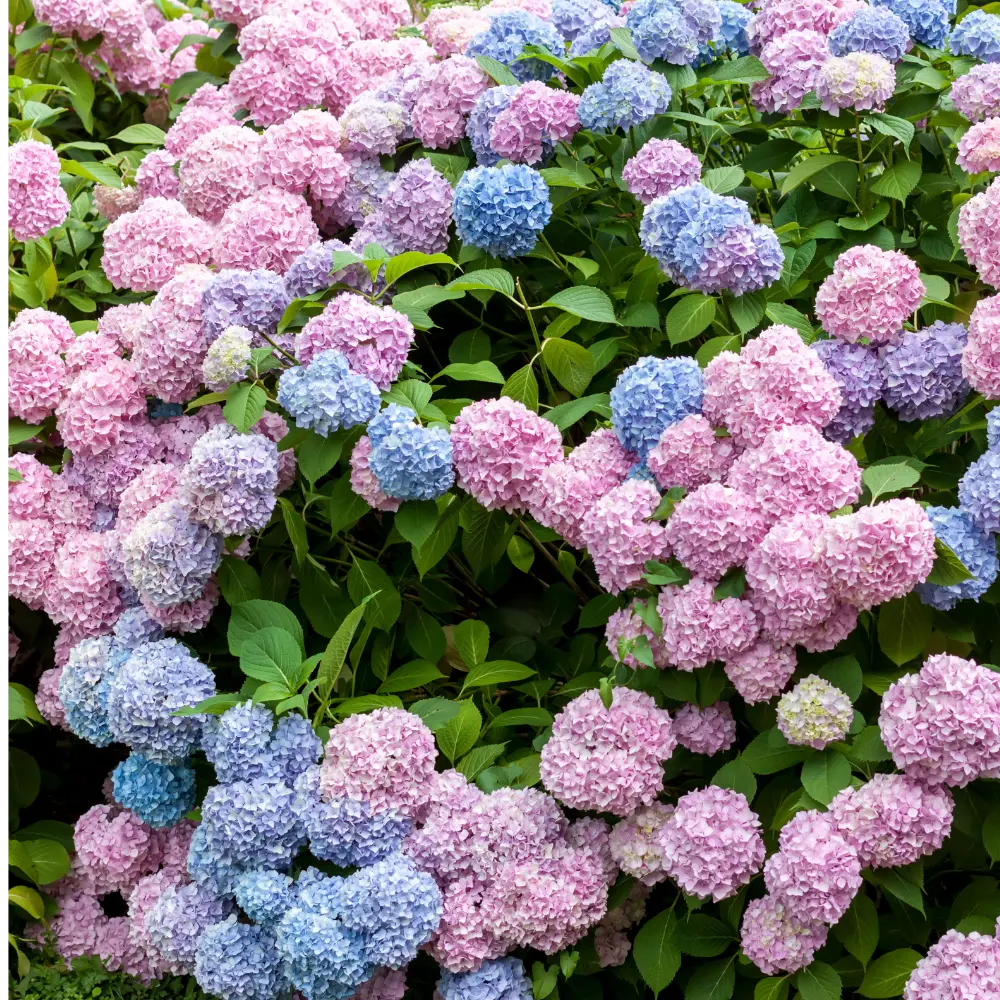Hydrangea
The Hydrangea is a beautiful flowering plant known for its large, colorful blooms that come in shades of pink, blue, white, or purple. Easy to grow, it adds charm and brightness to gardens or homes, making it perfect for creating a cheerful and inviting atmosphere.
PLANT DESCRIPTION
Plant Name: Hydrangea
Scientific Name: Hydrangea macrophylla
Full Plant Height: 35 cm / 13.78 inches
Full Plant Length: 25 cm / 9.84 inches
Full Plant Width: 20 cm / 7.87 inches
Category: Outdoor and Indoor Plant
Sunlight under Indian conditions:
Hydrangeas thrive in partial shade, with early morning sunlight being ideal (before 10 a.m.). Avoid harsh afternoon sunlight, as it can scorch the leaves and flowers. Place the plant in a spot where it receives bright, filtered sunlight for 4-6 hours daily.
Watering under Indian conditions:
Hydrangeas require consistent moisture but dislike waterlogging. Water the plant when the top 1 inch of soil feels dry. For a plant of this size, 300-500 ml (0.3 to 0.5 liters) of water per session is sufficient. Water deeply to encourage root growth.
Best soil mix for the above plant:
A well-draining and moisture-retentive soil is ideal. Mix:
30% Coco Peat or Peat Moss
20% Perlite or Vermiculite
20% Garden Soil
20% Compost or Well-Rotted Manure
10% Sand
Best pH level for Hydrangeas:
5.5 to 6.5 (slightly acidic); soil acidity can influence flower color, making them blue in acidic conditions and pink in alkaline conditions.
Soil Temperature:
Keep soil temperatures between 16-24°C for optimal growth.
Suitable Place:
Hydrangeas are versatile and can be grown in gardens, balconies, or indoor spaces with bright indirect light. Ideal locations include shaded patios, windowsills, or living rooms with sufficient ventilation.
Plant Quality: Very Good (Excellent, Very Good, Good, Moderate, Poor)
PLANT BENEFITS
Oxygen Production of this Plant:
Hydrangeas contribute moderate oxygen production, releasing approximately 100-200 milliliters of oxygen per day, depending on environmental factors. While not a high oxygen producer, they improve air quality and enhance aesthetics.
Low Maintenance:
Hydrangeas require periodic care but are manageable with regular watering, pruning, and fertilizing.
Air Purification:
This plant effectively cleanses the air in a space of about 8-12 square feet, removing toxins and increasing humidity.
Aesthetic Appeal:
Hydrangeas' lush white blooms and green foliage make them a stunning addition to any indoor or outdoor space, enhancing beauty and elegance.
Best for Gifts:
The Hydrangea is perfect as a decorative gift for occasions like housewarmings or anniversaries, symbolizing gratitude and understanding.
Mood and Productivity:
Hydrangeas are known to improve mood by 25-35% and create a calming environment, which can boost productivity by 8-12%.
Suitability for Humans:
8/10 – Safe for indoor environments but mildly toxic if ingested by humans or pets. Handle with care.
Plant Review by PARLO (Rating out of 10):
Oxygen Production (6/10): Moderate oxygen contribution.
Air Purification (7/10): Effective in small to medium spaces.
Low Maintenance (8/10): Thrives with moderate care and indirect light.
Aesthetic Appeal (9/10): Gorgeous blooms elevate any space.
Mood & Productivity (8/10): Provides tranquility and focus.
Suitability for Humans (8/10): A safe and decorative choice.
Other Benefits (8/10): Suitable for both indoor and outdoor settings, making it versatile and appealing.
HOW TO PLANT A HYDRANGEA SAPLING
Choose the Pot:
Use a pot with drainage holes, large enough to allow root expansion. A pot that is 8-10 inches in diameter is ideal for a sapling.Prepare the Pot:
Add small stones or pottery pieces at the base to facilitate drainage and prevent water stagnation.Add Soil Mix:
Fill the pot with the prepared mix of coco peat, perlite, garden soil, compost, and sand. Ensure the mix is slightly acidic.Plant and Water:
Place the sapling in the center, fill soil around the roots, and gently press to remove air pockets. Water thoroughly but avoid waterlogging.Place and Care:
Keep the plant in partial shade or indirect sunlight. Water when the top inch of soil feels dry, and monitor for pests or fungal infections. Prune faded flowers to encourage new growth.
This content will be shared across all product pages.

.webp?unique=2f9e814)
.webp?unique=2f9e814)
.webp?unique=2f9e814)

.webp?unique=2f9e814)
.webp?unique=2f9e814)
.webp?unique=2f9e814)